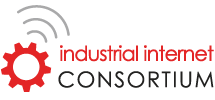 We sometimes forget how miraculous it is that our technology talks to each other. The ability to hook a computer to a network, or Skype to a landline, is not preordained. It takes interested parties to sit together and set standards.
We sometimes forget how miraculous it is that our technology talks to each other. The ability to hook a computer to a network, or Skype to a landline, is not preordained. It takes interested parties to sit together and set standards.
The “Internet of Things” is a great idea, but suffers mostly from being an endless series of data islands. A dishwasher can talk to the Internet, and a fitness band can talk to a smartphone, and a jet engine can talk to a satellite, but the standards that would easily allow any set of unrelated devices to talk to any other set of related devices hasn’t existed.
With some urging from the U.S. government, big players in the IoT world have agreed to get around a table and make some sense out of what they all need. AT&T, Cisco, GE, IBM and Intel are founding members of Industrial Internet Consortium. This is not particularly about wearables, although it will have a significant effect on the wearables industry. The industries that the members are focusing on are energy, healthcare, manufacturing, public sector, and transportation. To be specific, from the group’s FAQ:
The IIC scope includes the identification and location of sensor devices, the data exchange between them, control and integration of collections of heterogeneous devices, data extraction and storage plus data and predictive analytics. The challenge for the IIC is to ensure that these efforts come together into a cohesive whole.
The alliance does not necessarily have an open field here. In December, the Linux Foundation created the AllSeen Alliance, which uses an open-source code stack from Qualcomm to do much of what the IIC seems to be after, albeit on a much more limited basis. Products based on AllSeen are expected to be announced at the 2015 CES. It may be possible that we’re looking at two different sets of standards developing — one for consumer products and one for industrial, but that would be a shame. The better outcome may be standards that coordinate and not compete.